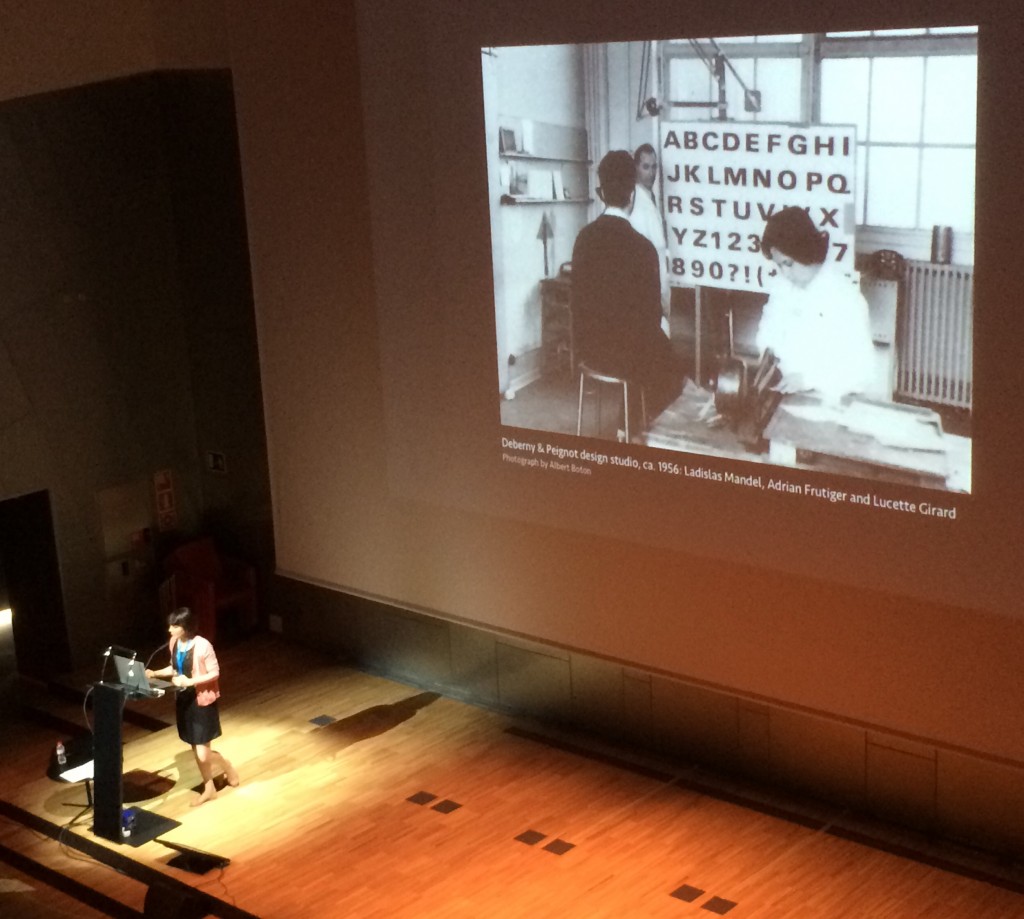My slides from SmashingConf in Freiburg are on Speakerdeck, with some additional annotations. The video of the talk will go online at some point, is now online, but the slides capture the key points.
The stats on Speakerdeck suggest that people find the slides useful, but we are still a bit off from an easy way to host a presentation that makes the content searchable, taggable, connectable. The new TED system of linking the talk transcription to the video is very impressive, but difficult to imagine for smaller events with tighter budgets.
The effort put in to get “just” good video and audio from presentations is already substantial, especially for academic conferences and smaller events (i.e. tight budgets, uneven expertise). For speakers who plan their talks integrating images/video into the spoken narrative, the challenge is harder.
Immediately after SmashingConf, Joana Correia and Eben Sorkin captured almost the totality of the talks at ATypI Barcelona (which will be posted online over the coming weeks and months on the Association’s site). Their dedication and hard work was humbling, but it was obvious that even professional recording systems are external to the presentation proceedings. In a sense, the capturing setup is a plugged-in observer, rather than integrated in the presentation itself. Going further, I’d argue that capturing should be integrated into the authoring process, with markup, annotations, and linking considered from the outset.
This seems like a good time to revisit my thoughts from a year ago on capturing conference presentations, although – TED system apart – most of what I wrote probably stands.

